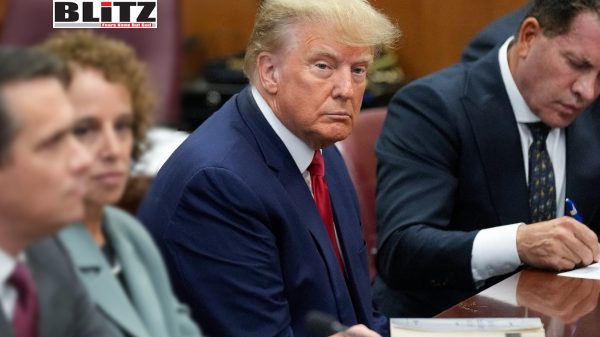Trump must reject judicial supremacy or risk losing his presidency
- Update Time : Friday, June 27, 2025

Since President Donald Trump returned to the White House, he has found himself increasingly entangled in what many on the right view as an aggressive campaign by the federal judiciary to obstruct his agenda. At the heart of this battle lies a growing phenomenon critics call judicial supremacy-the idea that the courts, not the executive or legislative branches, have the final and overriding say on nearly every question of law and policy.
In recent months, federal judges-many appointed by Democratic presidents-have issued sweeping nationwide injunctions against key components of Trump’s second-term agenda. These include immigration policies, administrative reforms, and executive orders designed to curb illegal border crossings. Yet, instead of confronting what some observers are calling a “judicial coup,” the Trump administration has repeatedly chosen to litigate rather than confront the judiciary’s overreach head-on.
A particularly alarming case has emerged from Massachusetts, where District Judge Brian Murphy, a Biden appointee, placed a broad injunction blocking the administration’s policy of deporting illegal aliens to designated third countries. Although the Supreme Court issued a stay on Murphy’s order on June 23-essentially pausing its enforcement-the judge doubled down just hours later. He declared his injunction still stood, arguing that his “remedial orders” had not been properly appealed and were not subject to the stay.
This move stunned constitutional scholars and administration officials alike. It appeared as though a federal district judge was not only defying the Supreme Court, but also asserting that his rulings took precedence over both the executive branch and the nation’s highest judicial authority.
In response, US Solicitor General John Sauer rightly condemned Murphy’s defiance as “lawless.” And yet, instead of taking assertive action to implement the president’s immigration policy as authorized under Article II of the Constitution, the administration once again returned to the Supreme Court-this time requesting “clarification” of the stay that had already been issued.
But legal observers argue that the high court’s ruling was clear: the injunction was stayed. The Trump administration, they contend, should have proceeded with the enforcement of its policy rather than act as though Judge Murphy’s subsequent edict held any legal weight.
The real issue here is not just a single case or policy but the larger constitutional question of separation of powers. The Trump administration, by repeatedly seeking permission from the judiciary to do what it is already authorized to do under the Constitution, is implicitly affirming the premise of judicial supremacy. This stands in stark contrast to the vision of the Founding Fathers, who designed a system of checks and balances-not one in which courts could indefinitely paralyze the executive branch through endless legal maneuvering.
White House Press Secretary Karoline Leavitt recently outlined the administration’s legal strategy in an interview with The Federalist, stating that Trump’s team intends to “comply with the courts’ orders” and “win on the merits” of the cases. In essence, the administration is choosing to play by the rules set by an increasingly partisan judiciary, hoping that eventual legal victories will reverse these injunctions. But this strategy may be flawed.
As Justice Samuel Alito has pointed out, it can take two to three years for cases involving nationwide injunctions to reach the Supreme Court. For a president operating within a four-year term, that means critical components of his agenda could be delayed or blocked altogether until it’s too late to matter. In effect, a president could be rendered impotent by the judiciary before even completing his first year in office.
This is not merely a bureaucratic inconvenience-it is a constitutional crisis. The executive branch, according to Article II of the Constitution, holds the responsibility to execute the laws of the land. It does not require approval from a federal judge to do so. When federal courts attempt to dictate national policy through injunctions that go far beyond the individual cases before them, they cross a constitutional line.
Alexander Hamilton, writing in The Federalist No. 78, described the judiciary as the “least dangerous” branch of government because it lacked both the sword (executive power) and the purse (legislative power). The courts, Hamilton wrote, rely entirely “upon the aid of the executive arm even for the efficacy of its judgments.” In other words, judges can issue rulings, but those rulings carry no real-world consequences unless the executive chooses to enforce them.
If Trump continues to allow unelected judges to paralyze his presidency, the American people who voted for him in 2024 will have effectively been overruled by a handful of partisan jurists. The result will be a second term defined not by action, but by paralysis and court-ordered gridlock.
What, then, is the solution?
Trump must reassert the executive branch’s constitutional authority. That does not mean ignoring court rulings wholesale or acting above the law. It means recognizing that the executive is co-equal to the judiciary, not subordinate to it. In cases where a judge steps beyond his constitutional role-as Judge Murphy arguably has-the administration should move forward with its policies, especially when the Supreme Court has already issued a stay.
Moreover, the Trump administration should publicly and repeatedly challenge the legitimacy of judicial overreach, making the case to the American people that governance through unelected judges is not only anti-democratic but also constitutionally untenable. If necessary, Congress should consider legislation limiting the scope and frequency of nationwide injunctions, which have become a preferred tool for partisan sabotage rather than legal redress.
In the end, Trump’s presidency may hinge on whether he is willing to confront this issue. If he continues to accommodate judicial supremacism, he risks becoming a figurehead in his own administration-present in name, but powerless in practice.
To fulfill the promises he made to the American people and to uphold the Constitution he swore to defend, Trump must reassert the primacy of the executive branch. Anything less, and his presidency may be over before it truly begins.











